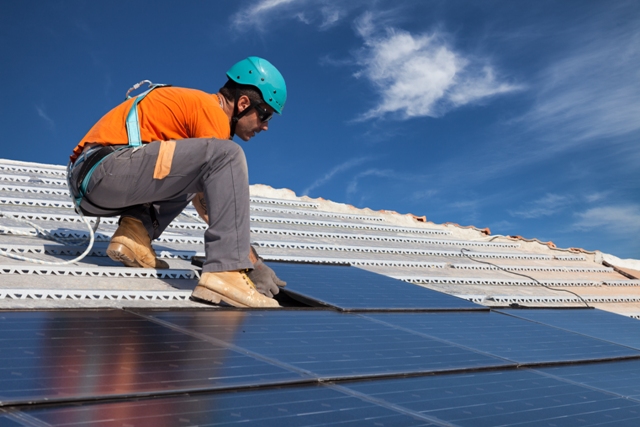
Global clean energy investment tumbled 18 per cent last year
by Cleantech Canada Staff

In tougher year for wind and solar, Canadian renewable spending fell 42 per cent, outpacing seven per cent decline in U.S.

Despite the decline, 126.5 gigawatts of renewable power capacity was installed last year, more than the 119 GW installed in 2015
NEW YORK CITY—Global investment in clean energy projects declined in most major regions last year, as countries slowed spending following a record-breaking 2015, according to a new Bloomberg New Energy Finance report.
The research firm released its 2016 renewable energy analysis Jan. 12, highlighting an 18 per cent decline in worldwide spending and a whopping 42 per cent drop in Canadian investment in clean energy.
Globally, investment fell to US$287.5 billion, down from 348.5 billion last year. In Canada, it was the second consecutive year of sharp declines; spending reached $9 billion in 2014 before dropping to $4.1 billion in 2015 and just $2.4 billion last year.
Among the many reasons for the pullback, BNEF cited the falling costs of solar power and slowing investment in two key markets: China and Japan. Spending in China declined 26 per cent to $87.8 billion from last year’s all-time high, while its Asian neighbour shelled out 43 per cent less for solar and wind technologies throughout 2016, investing $22.8 billion.
“After years of record-breaking investment driven by some of the world’s most generous feed-in tariffs, China and Japan are cutting back on building new large-scale projects and shifting towards digesting the capacity they have already put in place,” Justin Wu, head of Asia for BNEF, said in a statement.
“China is facing slowing power demand and growing wind and solar curtailment. The government is now focused on investing in grids and reforming the power market so that the renewables in place can generate to their full potential,” Wu added. “In Japan, future growth will come not from utility-scale projects but from rooftop solar systems installed by consumers attracted by the increasingly favorable economics of self-consumption.”
Investment slipped 26 per cent in the Asia-Pacific region as a whole.
Results elsewhere were similar, though often less extreme. Spending fell seven per cent in the U.S. and five per cent in Brazil, while in India, it was essentially unchanged.
Europe, where spending rose three per cent to $70.9 billion, was one of the major holdouts.
One notable bright spot was in the offshore wind market. With developers directing capital to larger turbines with a higher payback, investment in the offshore industry climbed about 40 per cent from 2015.
“The offshore wind record last year shows that this technology has made huge strides in terms of cost-effectiveness, and in proving its reliability and performance,” Jon Moore, BNEF’s chief executive said. “Europe saw $25.8 of offshore wind investment, but there was also $4.1 in China, and new markets are set to open up in North America and Taiwan.”
Despite the overall spending decline, 126.5 gigawatts of renewable power capacity was installed over the past 12 months, more than the 119 GW installed in 2015.